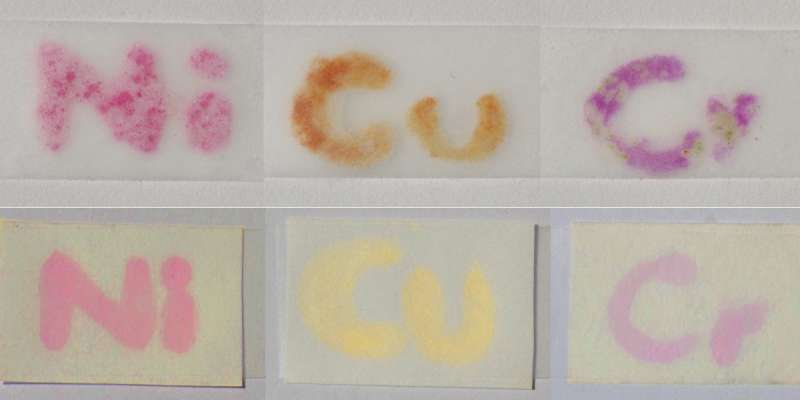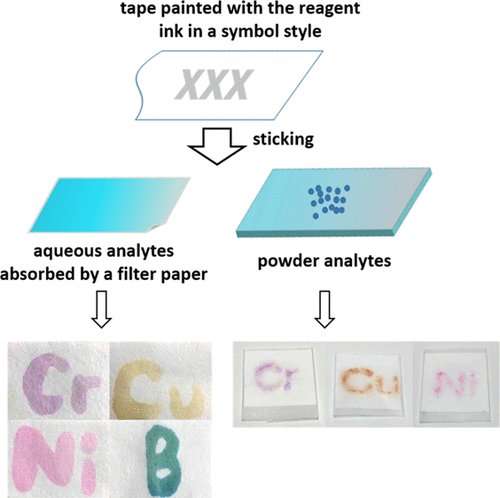To improve dipstick diagnostic and environmental tests, just add tape

Simple paper-strip testing has the potential to tell us quickly what's in water, and other liquid samples from food, the environment and bodies—but current tests don't handle solid samples well. Now researchers have developed a way to make these low-cost devices more versatile and reliable for analyzing both liquid and solid samples using adhesive tape. They report their approach in the journal ACS Applied Materials & Interfaces.
One of the best-known examples of a paper dipstick test is the home pregnancy test, which detects the presence of a particular hormone in urine. Pregnancy tests are known to be accurate, but many other paper-based sensors are not as reliable. Liquid samples can push the color indicator off the paper or outward toward the edges of the readout, making the results inaccurate or harder to read. When it comes to testing anything solid, such as food or soil, samples need to be processed into a liquid form. Wei Shen and colleagues wanted to address these limitations and expand paper-based sensor applications to analyze solids.
To test either liquid or solid samples, the researchers turned to the same household staple many of us use to repair a torn book page or affix a photo to a piece of paper: adhesive tape. The team drew chemical symbols onto the tape using indicator "inks" that change color when they react with specific substances, such as copper and chromium. The low-cost sensor, which the researchers dubbed "chemical responsive adhesive tape," or CAT, changed color and revealed the chemical symbols in response to solid heavy metal salts in a powder and metal ions in solution. Additionally, when paired with paper-based sensors, CAT could detect heavy metal ions in water, without displacing the indicator ink. The researchers also showed that the sensor could be used to detect proteins in solution.

More information: Weirui Tan et al. Low-Cost Chemical-Responsive Adhesive Sensing Chips, ACS Applied Materials & Interfaces (2017). DOI: 10.1021/acsami.7b14122
Abstract
Chemical-responsive adhesive sensing chip is a new low-cost analytical platform that uses adhesive tape loaded with indicator reagents to detect or quantify the target analytes by directly sticking the tape to the samples of interest. The chemical-responsive adhesive sensing chips can be used with paper to analyze aqueous samples; they can also be used to detect and quantify solid, particulate, and powder analytes. The colorimetric indicators become immediately visible as the contact between the functionalized adhesives and target samples is made. The chemical-responsive adhesive sensing chip expands the capability of paper-based analytical devices to analyze solid, particulate, or powder materials via one-step operation. It is also a simpler alternative way, to the covalent chemical modification of paper, to eliminate indicator leaching from the dipstick-style paper sensors. Chemical-responsive adhesive chips can display analytical results in the form of colorimetric dot patterns, symbols, and texts, enabling clear understanding of assay results by even nonprofessional users. In this work, we demonstrate the analyses of heavy metal salts in silica powder matrix, heavy metal ions in water, and bovine serum albumin in an aqueous solution. The detection is one-step, specific, sensitive, and easy-to-operate.
Journal information: ACS Applied Materials and Interfaces
Provided by American Chemical Society


















